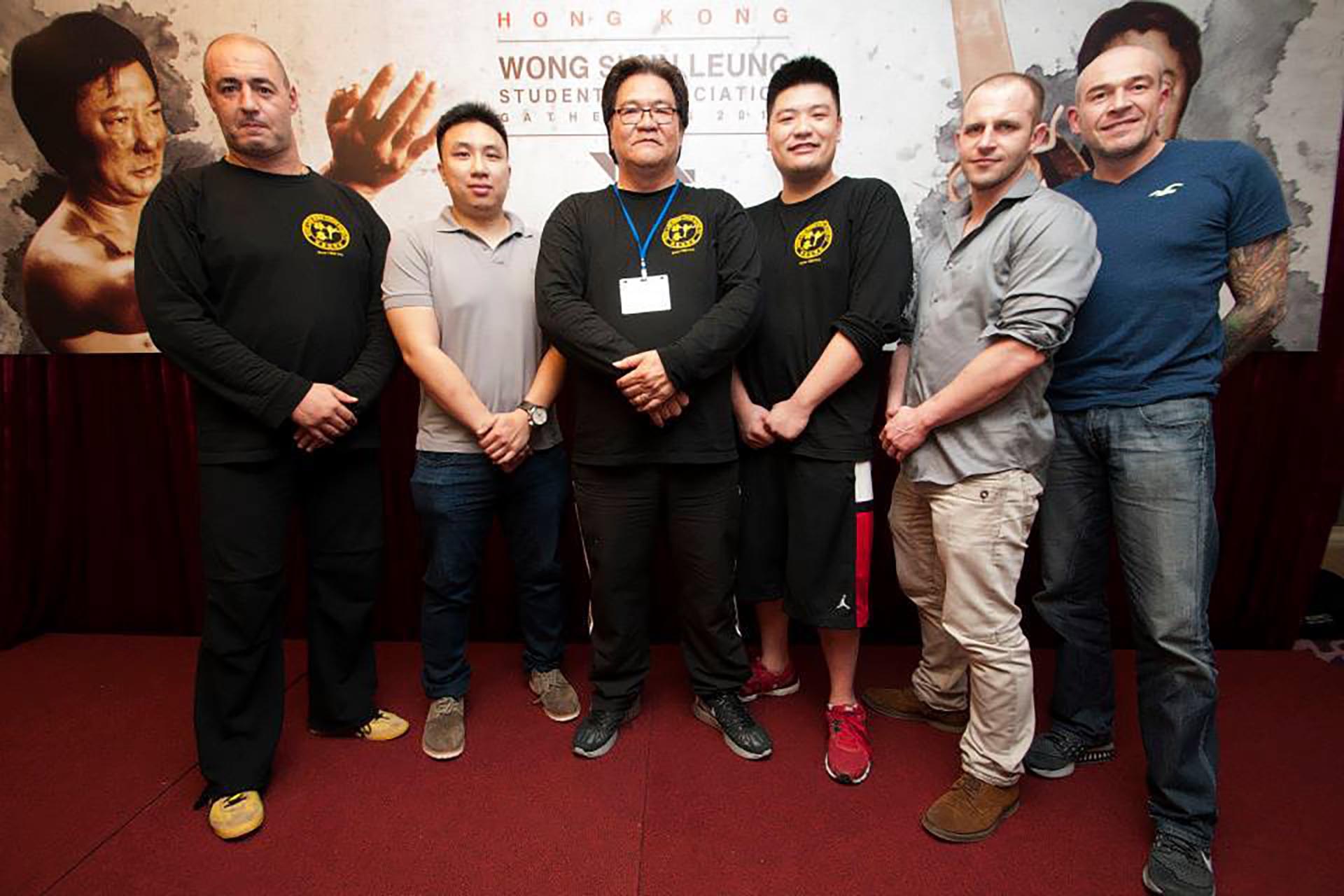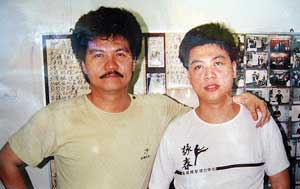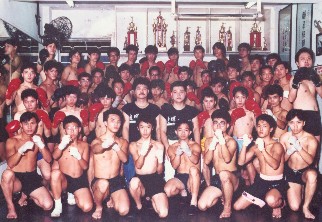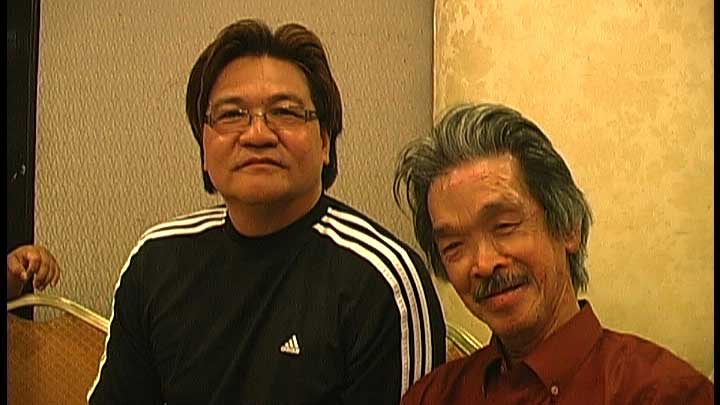Who & What
We are a consortium of expert martial artist serving clients all over the world. We provide our clients with useful information and advice they need to make sound decisions to meet their goals.
Sifu Lam is one of the world’s leading experts in Wing Chun Kung Fu and like his teacher honed his skills in tournament fighting and personal self-defense experiences. Sifu Lam teaches Wing Chun Kung Fu and Muay Thai Boxing at his training institute in Monterey Park, California, and has been teaching for over 20 years.
In recognition of his Wing Chun skills and character, his Wing Chun peers in Hong Kong elected him as the President of the Hong Kong Wing Chun Society in 1991.
Sifu Gary Lam trained Wing Chun exclusively with Wong Shun Leung for 15 years and was his head coach in Hong Kong for 6 years. As Wong Shun Leung’s top student, Sifu Lam put his Wing Chun skills to the test by entering tournaments and destroying the competition. His excellent fighting skills made him the undefeated champion of the Hong Kong full Contact Tournament in 1978-1979, and his trophies and titles are too numerous to mention.
Sifu Lam is one of the world’s leading experts in Wing Chun Kung Fu and like his teacher honed his skills in tournament fighting and personal self-defense experiences. Sifu Lam teaches Wing Chun Kung Fu and Muay Thai Boxing at his training institute in Monterey Park, California, and has been teaching for over 20 years.
In recognition of his Wing Chun skills and character, his Wing Chun peers in Hong Kong elected him as the President of the Hong Kong Wing Chun Society in 1991.
I first heard about Sifu Gary Lam from a Chinese medicine colleague a little over 10 years ago. He was absent-mindedly doing some techniques in the air, and after asking him about it I learned they were movements from Wing Chun Kung Fu. He said if I was interested I should come and check out his Sifu, who taught out of his backyard, and always welcomed visitors to his class. I mentioned this to a good friend of mine who also at the time was in search of a traditional martial arts teacher. The next Saturday morning we headed off to Monterey Park California not knowing what to expect but excited about the adventure. Sifu Lam turned out to be a very approachable, articulate and easy-going man. He laughed a lot and seemed to derive great joy in sharing his knowledge about Wing Chun. Within about five minutes of being in his backyard, Sifu Lam was giving us an impromptu demonstration and lecture about what Wing Chun was and what it was like to experience it firsthand. Before we knew it, he was having us attack him in various ways as he effortlessly deflected and countered our movements. It was like watching a magician perform. After 20 minutes or so of this I knew I had found the teacher that I had been looking for, hidden in a backyard in Monterey Park. I could not believe my luck. Here was a Sifu that not only talked about the internal and often secret aspects of Kung Fu, but could demonstrate those skills with ease and seemed eager to teach anyone who would learn. I signed up that very day and within a month was attending all public classes and showing up for 2 privates a week. For the next 7 years I threw myself into Wing Chun training under Sifu Lam and never looked back.
Sifu Lam first began learning Wing Chun over 35 years ago with the famed Hong Kong challenge fighter Wong Shun Leung. He spent the better part of 13 years training daily at Sigung Wong’s school, and the last 6 years of his time there was spent as Sigung Wong’s assistant instructor. Sifu Lam not only mastered the style of Wing Chun taught by Sigung Wong, but also learned Muay Thai boxing in Thailand from several champion fighters. At Sifu Lam’s school in Hong Kong he offered instruction in Wing Chun and Muay Thai side by side. His students at that time were among the highest ranked competitors in Hong Kong. Sifu Lam’s school quickly gained fame and was known all over the world for producing top notch Wing Chun and Muay Thai fighters. Like his teacher, Sifu Lam competed in numerous challenge matches and tournaments. In 1978 he won a prestigious Hong Kong open tournament, beating all challengers, and was awarded the champions gold coin. In recognition of his achievements, leadership and contributions to Wing Chun, Sifu Lam was made the 1991 President of the Hong Kong Wing Chun Society. In 2006 Sifu Lam was awarded Sifu of the Year by the World Ving Tsun Athletic Association. Like Yip Man, Wong Shun Leung and all the great teachers in the Wing Chun lineage, Sifu Lam has secured a place for himself in the history of Wing Chun Kung Fu.
Today Sifu Lam teaches Yip Man’s Wing Chun as he learned it from Wong Shun Leung, and has also continued developing the art by organizing and clarifying its varied component parts. He teaches that Wing Chun has 5 primary aspects to it: Crossing Hand, Pulling, Pushing, Closing and Footwork. Although each part is a separate study, the different sections are meant to function together as a seamless whole. The best known techniques of Wing Chun are Crossing Hand; these actions have to do with striking the head and neck while simultaneously taking away the opponent’s ability to defend or counterattack. This style of striking is the primary and first task in Wing Chun, but occasionally there are special circumstances, distances and opportunities that allow for techniques that project, throw, lock joints or do damage to the legs. In Wing Chun these kinds of skills are called chance actions, usually done after a crossing hand strike and thus also referred to as second actions. As with anything in martial arts training, developing ability with the chance action fighting skills requires time, dedication and perseverance. The moment of truth for these kinds of techniques can never be predicted, but if the reflexes have been honed with hard training then the chance actions of Wing Chun can become a devastating wild card.
Training with Sifu Lam was an amazing time in my development as a martial artist. Looking back on it, the opportunity I had to learn from him was the culmination of my years of training in the martial arts. My background in other arts allowed me to focus in on fine points and subtleties that, had I been a beginner, would have taken me years to appreciate and develop. Wing Chun has a saying that it starts where other arts end. This does not mean that Wing Chun thinks it is better than other arts; only that, it introduces skills, concepts and structure to the student years ahead of where other arts start teaching similar material. Wing Chun was designed to impart high level Kung Fu skill quickly and efficiently. Its techniques are almost completely devoted to a relentless attack upon the opponent’s head and neck, taking their position and simultaneously rendering useless any defense offered. Practiced correctly, Wing Chun is a frightening martial art to witness, and Sifu Lam’s ability to put these kinds of skills into practice is phenomenal. I remember my first experience of Qi Sao with Sifu Lam and how he just laughed and joked throughout the whole session. Like a cat playing with a mouse, he had complete control and attacked any target he liked at will. Sifu Lam is an extraordinary blend of technical precision and spontaneous activity; he is a living example of how someone who has made Wing Chun a natural expression reacts and responds to any attack made against him.
What makes Wing Chun unique is that its focus is not about developing prescribed techniques against particular attacks. Instead, in Wing Chun training the emphasis is on principles, skills and concepts. Like learning a language, the student first learns letters, then words, and later learns how to read and write on their own. In Wing Chun we want to train people to understand how to think independently, responding to each unique situation with the ability to adapt and change as needed. In real fighting anything can happen. It is a random and chaotic experience that follows no patterns, rules or standards. Because of these realities, Wing Chun training revolves around a free-style drill called Qi Sao. Qi Sao is often referred to as the soul of Wing Chun. Qi Sao is the natural direction in which all training in Wing Chun is headed. It is why students practice forms, skills and do drills together. Qi Sao is the point in training when the student begins to develop real fighting skills, but Qi Sao should not be confused with a real fight. Just as a pencil sharpener is used to hone a writing tool, sharpening the tool itself is not actually writing. Like the pencil sharpener, Qi Sao is a powerful tool in developing skills for fighting, but Qi Sao is not actually fighting. This means that Qi Sao should not be seen as an end in itself, and that just like any other drill it is not an “anything goes” situation. Qi Sao is meant to develop all the skills, concepts and structure that the student has been perfecting from day one of training. It is a chance to bring all these studies together as a cohesive whole, so that in a real fight what comes out of our body is what we programmed into it. Qi Sao is done standing, moving and with contact to provide an opportunity to upgrade our abilities. If Qi Sao is practiced in a way that ignores correct skill and technique, it will quickly degrade into a power vs. power wrestling match. Because Qi Sao already starts with the arms engaged, a power vs. power style of training will not yield good skills when the student has to actually close the distance on their own and attack the opponent without having contact of the arm from the beginning (called the bridge in Wing Chun). If we do not understand what a drill is trying to teach us, it’s possible we might believe that the drill itself is the thing we are training for. Mistaking Qi Sao for fighting would be a serious error. Having said that, if someone understands what Qi Sao is, it can be an unparalleled tool in upgrading our Wing Chun. Sifu Lam teaches that the skills of Qi Sao are directly applicable to real life situations, but it must be practiced in a way that reflects and understands how those skills will be used in an actual fight.
Sifu Lam has begun an ambitious teaching schedule to make his brand of Wing Chun Kung Fu available on a wide scale. He travels all over the world doing seminars, and now has several representatives teaching Gary Lam Wing Chun in other countries. Sifu Lam has recently promoted several of his top students to Coach Level (Sifu status) and now many of his student teachers are beginning to certify their own crop of students. Sifu Lam has also started documenting his system on DVD, allowing him to promote and develop Wing Chun as he teaches it to the broadest audience possible. I am privileged to have been one of Sifu Lam’s original students here in the U.S. and often find myself nostalgic for the old days in the backyard. I have no doubt that Sifu Lam will continue to refine, develop and happily share his beloved Wing Chun for years to come. I look forward to seeing where Sifu Lam will go next as he continues to develop and innovate his presentation of Wing Chun, and maybe once in a while getting a chance to drop in on the backyard.
BY GREGORY LEBLANC





